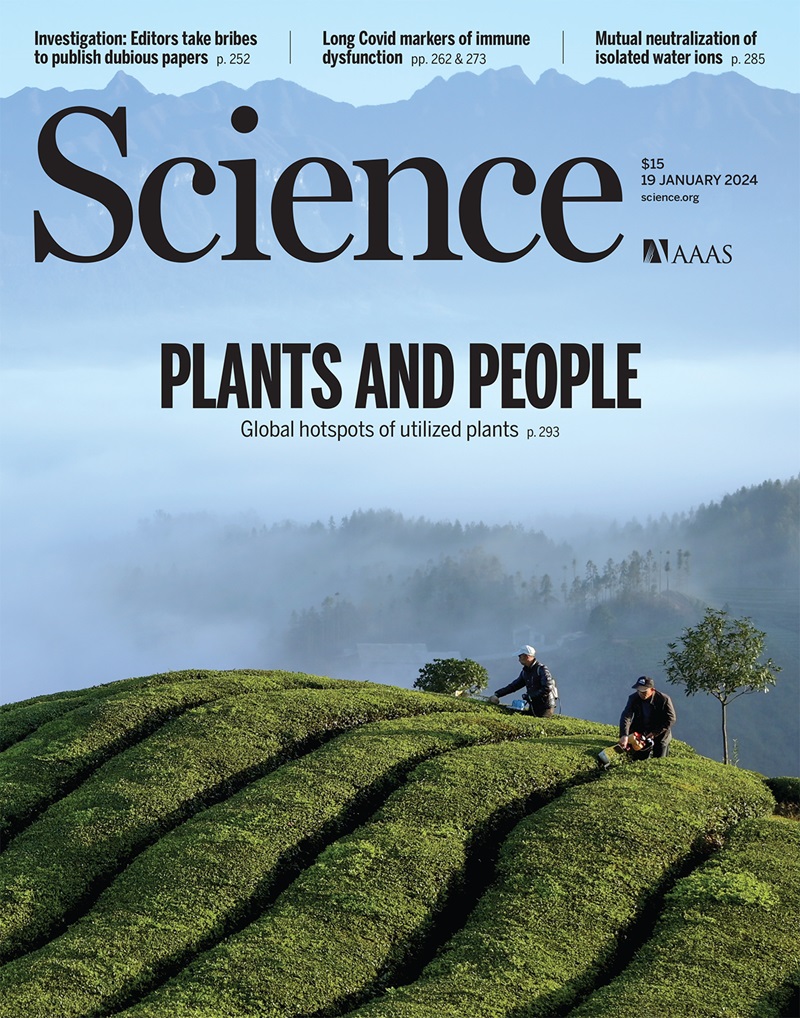Taurine deficiency as a driver of aging
IF 44.7
1区 综合性期刊
Q1 MULTIDISCIPLINARY SCIENCES
引用次数: 26
Abstract
Aging is associated with changes in circulating levels of various molecules, some of which remain undefined. We find that concentrations of circulating taurine decline with aging in mice, monkeys, and humans. A reversal of this decline through taurine supplementation increased the health span (the period of healthy living) and life span in mice and health span in monkeys. Mechanistically, taurine reduced cellular senescence, protected against telomerase deficiency, suppressed mitochondrial dysfunction, decreased DNA damage, and attenuated inflammaging. In humans, lower taurine concentrations correlated with several age-related diseases and taurine concentrations increased after acute endurance exercise. Thus, taurine deficiency may be a driver of aging because its reversal increases health span in worms, rodents, and primates and life span in worms and rodents. Clinical trials in humans seem warranted to test whether taurine deficiency might drive aging in humans.

牛磺酸缺乏是衰老的驱动因素。
衰老与各种分子循环水平的变化有关,其中一些分子尚未确定。我们发现,在小鼠、猴子和人类中,循环牛磺酸的浓度随着年龄的增长而下降。通过补充牛磺酸来逆转这种下降,增加了小鼠的健康寿命(健康生活期)和寿命,以及猴子的健康寿命。从机制上讲,牛磺酸可以减少细胞衰老,防止端粒酶缺乏,抑制线粒体功能障碍,减少DNA损伤,减轻炎症。在人类中,较低的牛磺酸浓度与几种与年龄相关的疾病相关,急性耐力运动后牛磺酸浓度增加。因此,牛磺酸缺乏可能是衰老的驱动因素,因为牛磺酸的逆转增加了蠕虫、啮齿类动物和灵长类动物的健康寿命以及蠕虫和啮齿类动物的寿命。人类临床试验似乎有必要测试牛磺酸缺乏是否会导致人类衰老。
本文章由计算机程序翻译,如有差异,请以英文原文为准。
求助全文
约1分钟内获得全文
求助全文
来源期刊

Science
综合性期刊-综合性期刊
CiteScore
61.10
自引率
0.90%
发文量
0
审稿时长
2.1 months
期刊介绍:
Science is a leading outlet for scientific news, commentary, and cutting-edge research. Through its print and online incarnations, Science reaches an estimated worldwide readership of more than one million. Science’s authorship is global too, and its articles consistently rank among the world's most cited research.
Science serves as a forum for discussion of important issues related to the advancement of science by publishing material on which a consensus has been reached as well as including the presentation of minority or conflicting points of view. Accordingly, all articles published in Science—including editorials, news and comment, and book reviews—are signed and reflect the individual views of the authors and not official points of view adopted by AAAS or the institutions with which the authors are affiliated.
Science seeks to publish those papers that are most influential in their fields or across fields and that will significantly advance scientific understanding. Selected papers should present novel and broadly important data, syntheses, or concepts. They should merit recognition by the wider scientific community and general public provided by publication in Science, beyond that provided by specialty journals. Science welcomes submissions from all fields of science and from any source. The editors are committed to the prompt evaluation and publication of submitted papers while upholding high standards that support reproducibility of published research. Science is published weekly; selected papers are published online ahead of print.
 求助内容:
求助内容: 应助结果提醒方式:
应助结果提醒方式:


